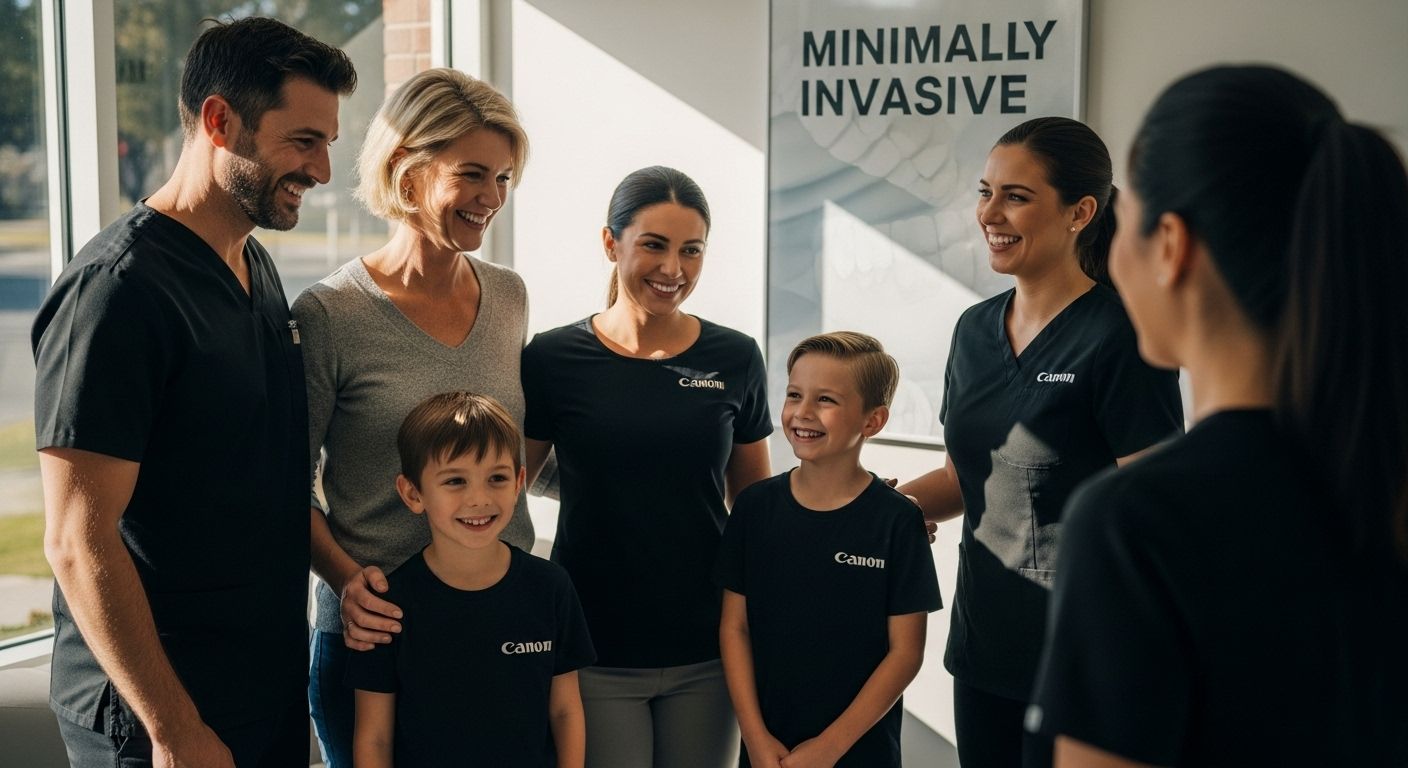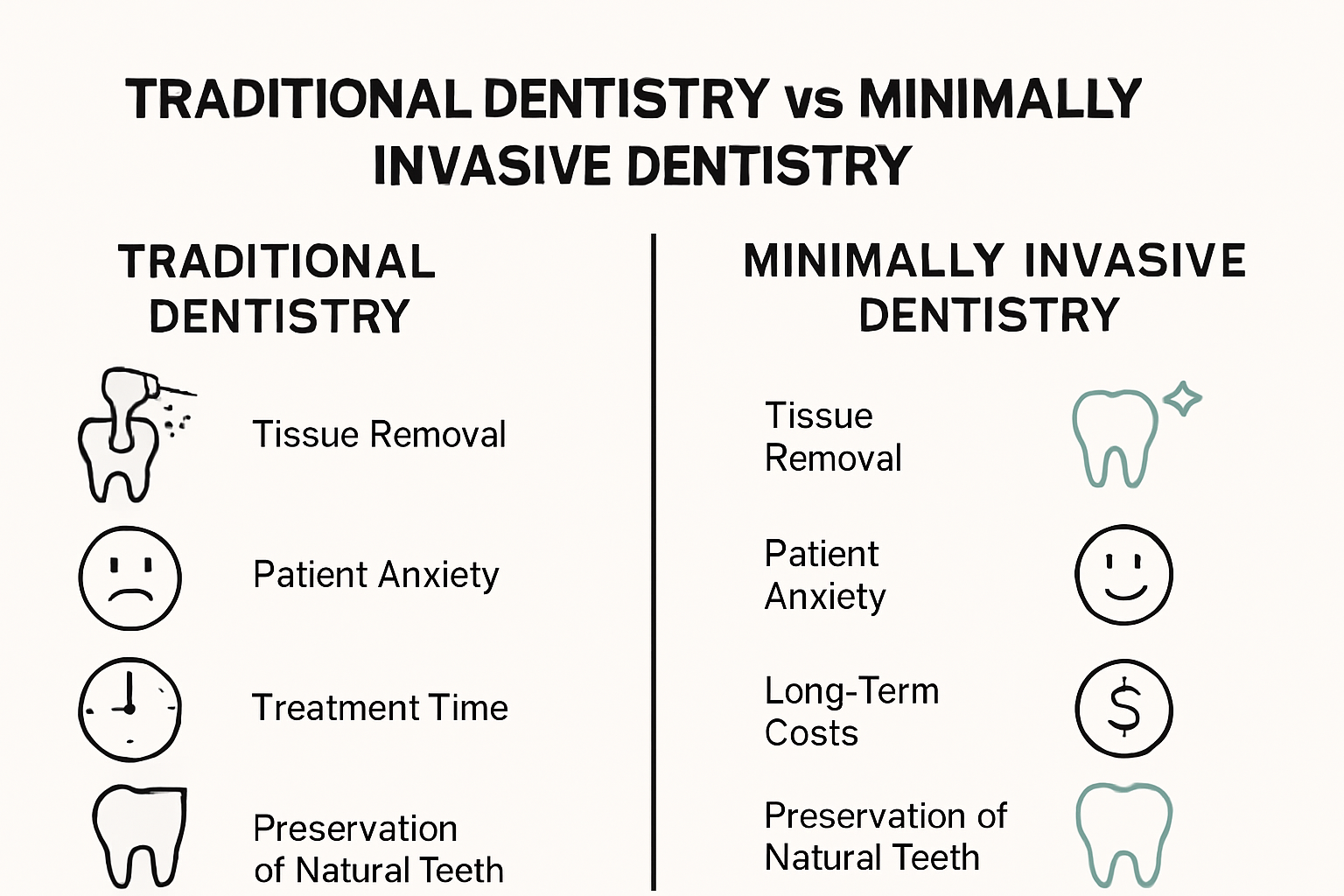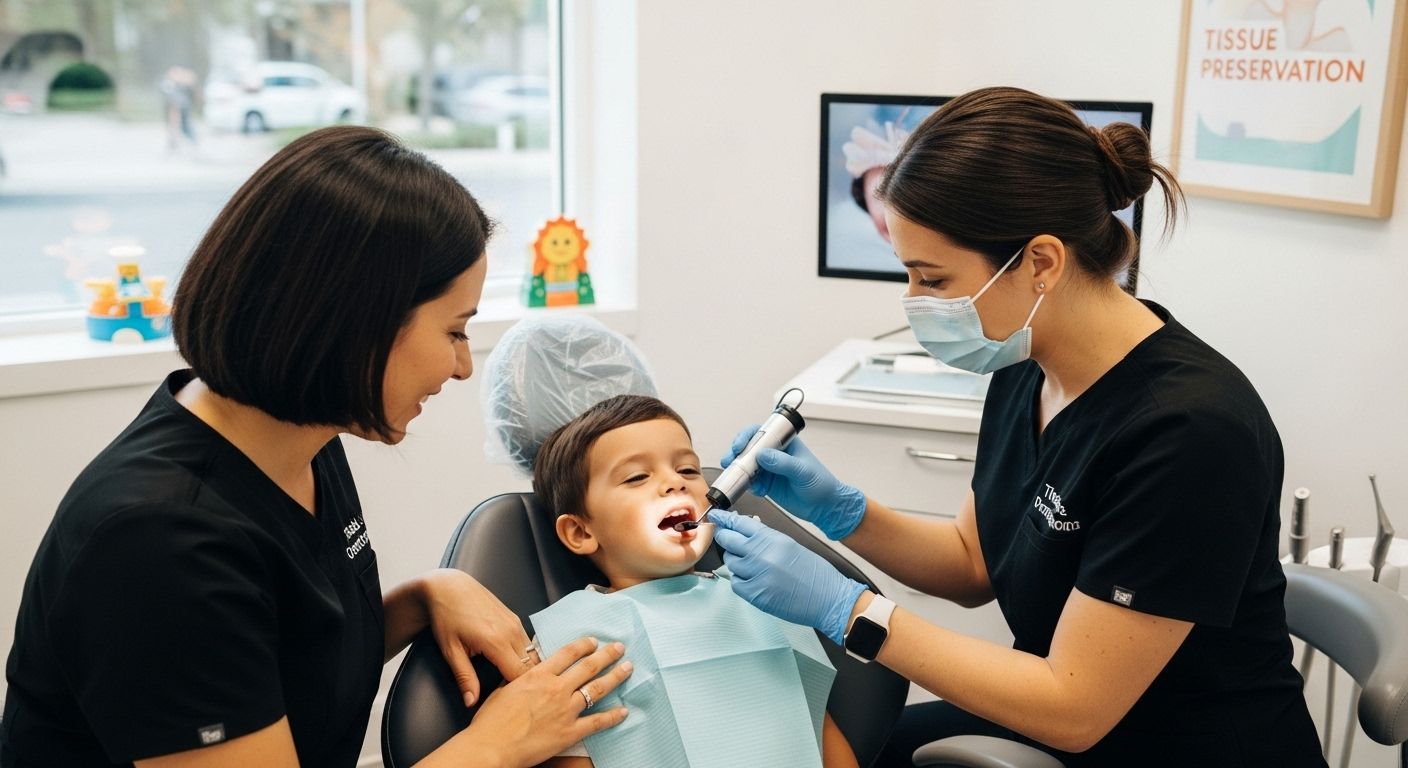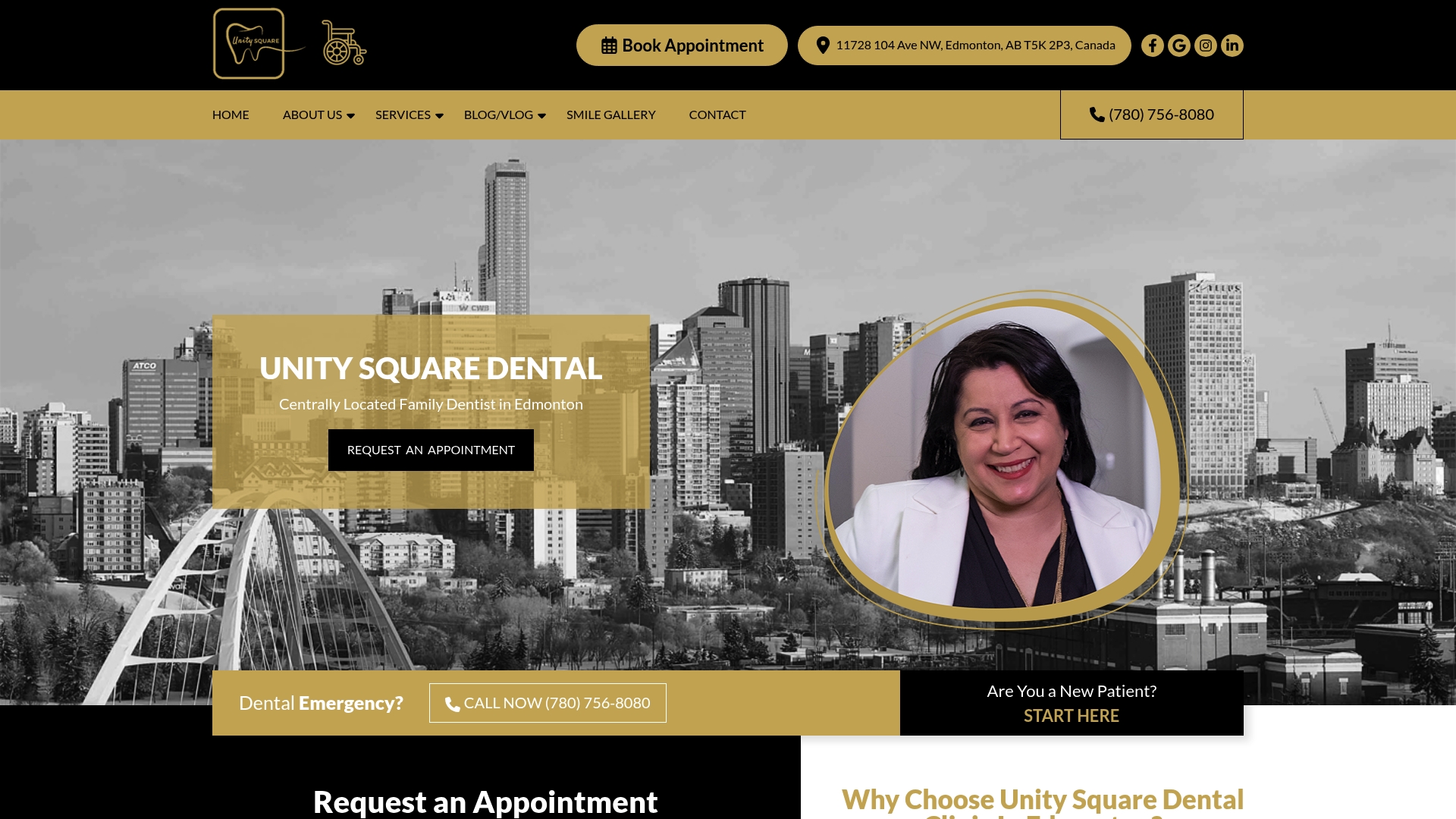
Minimally invasive dentistry is changing how people think about going to the dentist. Think about this: Minimally invasive treatments can cut patient discomfort and anxiety by up to 70 percent compared to traditional dental methods. Most folks expect pain, drills, and long recovery times, but that old-school experience is quickly becoming a thing of the past. The real surprise is that with the newest tools and techniques, dentists can fix problems earlier, save more of your natural teeth, and actually make your next dental visit something to look forward to.
Table of Contents
- What Is Minimally Invasive Dentistry?
- The Importance Of Minimally Invasive Techniques
- Key Principles Of Minimally Invasive Dentistry
- How Minimally Invasive Dentistry Works In Practice
- Real-World Applications And Benefits For Dental Patients
Quick Summary
| Takeaway | Explanation |
|---|---|
| Minimally invasive dentistry prioritizes tissue preservation. | This approach focuses on maintaining natural tooth structure during treatment to enhance long-term oral health. |
| Early detection prevents extensive dental issues. | Identifying problems at the microscopic stage allows for early intervention, reducing the need for invasive procedures. |
| Patient comfort is significantly improved. | Enhanced techniques reduce treatment time and minimize discomfort, making dental visits less anxiety-inducing. |
| Long-term costs are lower with preventative care. | By preventing major dental issues, patients experience fewer complex procedures, resulting in cost savings over time. |
| Child-friendly techniques enhance pediatric care. | These methods help children develop positive associations with dental visits, promoting healthy oral habits early on. |
What is Minimally Invasive Dentistry?
Minimally invasive dentistry represents a revolutionary approach to dental care that prioritizes preserving natural tooth structure while delivering effective treatment. Unlike traditional dental practices that often required extensive tooth removal, this modern philosophy focuses on prevention, early intervention, and conservative restoration techniques.
The Core Philosophy of Tissue Preservation
At its heart, minimally invasive dentistry is about respecting and maintaining the original biological tissue. According to the American Academy of Pediatric Dentistry, this approach emphasizes:
- Early detection of dental diseases
- Stopping disease progression through preventive strategies
- Performing restorations that remove the least amount of healthy tooth structure possible
This approach fundamentally shifts how dentists view and treat dental problems. Instead of aggressive interventions that significantly alter tooth anatomy, practitioners now seek the most conservative solutions that protect and maintain natural tooth integrity.
Key Techniques in Minimally Invasive Dentistry
Modern minimally invasive dentistry employs several advanced techniques to achieve optimal outcomes. These methods include:
- Diagnostic technologies that identify problems at microscopic stages
- Remineralization treatments that help rebuild tooth enamel
- Precision instruments that allow for smaller, more targeted interventions
- Biomimetic materials that closely mimic natural tooth structure
By utilizing these sophisticated approaches, dental professionals can address oral health challenges while minimizing patient discomfort and preserving maximum natural tooth structure. The result is a more patient-friendly experience that supports long-term dental health through strategic, scientifically informed care.
Ultimately, minimally invasive dentistry represents a patient-centered approach that combines advanced technology, preventive strategies, and a deep respect for the body’s natural healing capabilities. It transforms dental treatment from a potentially traumatic experience into a collaborative process focused on sustainable oral wellness.
Below is a comparison table to help you understand how minimally invasive dentistry differs from traditional dental methods based on aspects mentioned in the article.
| Aspect | Minimally Invasive Dentistry | Traditional Dentistry |
|---|---|---|
| Patient Discomfort & Anxiety | Significantly reduced, up to 70% less | Often higher, more common |
| Tissue Preservation | Maintains natural tooth structure | Frequently removes more tooth tissue |
| Treatment Focus | Prevention and early intervention | Corrective, often after damage occurs |
| Tools & Techniques | Advanced diagnostics, precision instruments, biomimetic materials | Drills, amalgam, traditional materials |
| Child Experience | Child-friendly, less intimidating | Can be distressing for children |
| Long-Term Costs | Lower due to preventative care | Higher from repeated or complex treatments |
| Recovery Time | Faster | Often slower |
The Importance of Minimally Invasive Techniques
Minimally invasive dental techniques represent a significant advancement in modern dental care, offering patients comprehensive benefits that extend far beyond traditional treatment approaches. These innovative methods prioritize patient comfort, long-term oral health, and precision while reducing potential risks associated with more aggressive dental interventions.
Reducing Patient Discomfort and Anxiety
Dental anxiety is a common concern for many patients, particularly children and individuals with previous traumatic dental experiences. According to the National Institutes of Health, minimally invasive techniques dramatically reduce patient stress by:
- Minimizing invasive procedures
- Decreasing overall treatment time
- Utilizing less painful intervention methods
- Preserving more natural tooth structure
By creating a more comfortable treatment environment, these techniques help patients develop positive associations with dental care, encouraging regular check-ups and proactive oral health management.

Long-Term Health and Economic Benefits
Beyond immediate patient comfort, minimally invasive dentistry offers substantial long-term advantages. These techniques provide comprehensive health benefits by:
- Preventing extensive tooth damage
- Reducing the likelihood of future complex dental procedures
- Supporting natural tooth regeneration processes
- Minimizing potential complications from aggressive treatments
Patients who undergo minimally invasive treatments often experience lower cumulative dental costs, as these approaches focus on early intervention and prevention rather than extensive corrective procedures. The precision and strategic nature of these techniques mean fewer repeat treatments and more sustainable oral health outcomes.
Ultimately, minimally invasive dental techniques represent a holistic approach to oral care. By combining advanced technology, patient-centered strategies, and a deep understanding of dental biology, these methods transform dental treatment from a potentially stressful experience into a collaborative, empowering process that supports lifelong dental wellness.
Key Principles of Minimally Invasive Dentistry
Minimally invasive dentistry is anchored in a comprehensive approach that transforms traditional dental care by prioritizing prevention, conservation, and patient-centered treatment strategies. This innovative methodology goes beyond mere technical procedures, representing a fundamental shift in how oral health is understood and managed.
Risk Assessment and Prevention
According to research published in dental journals, the foundational principle of minimally invasive dentistry involves thorough risk assessment and proactive prevention. This approach includes:
- Comprehensive evaluation of individual patient’s oral health profile
- Identifying potential risk factors before they develop into significant problems
- Developing personalized prevention strategies
- Implementing early intervention techniques
By focusing on understanding each patient’s unique oral environment, dental professionals can create targeted strategies that address potential issues before they require extensive treatment. Learn more about discussing your dental concerns effectively.
Conservative Treatment and Tissue Preservation
At the core of minimally invasive dentistry is an unwavering commitment to preserving natural tooth structure. This principle manifests through techniques that:
- Prioritize remineralization of early-stage dental lesions
- Use advanced adhesive technologies
- Apply microscopic treatment approaches
- Select biocompatible materials that support natural tooth healing
These methods represent a paradigm shift from traditional ‘drill and fill’ approaches, instead emphasizing techniques that support the tooth’s inherent regenerative capabilities. The goal is not just to treat dental issues but to work in harmony with the body’s natural healing processes.
The following table summarizes key principles and techniques of minimally invasive dentistry highlighted in the article, offering a quick-reference guide for families.
| Principle / Technique | Description |
|---|---|
| Early Detection | Identification of dental problems at microscopic or early stages to allow timely intervention |
| Risk Assessment | Comprehensive evaluation of individual risk factors and oral health profile |
| Prevention Strategies | Personalized plans to prevent dental issues before they escalate |
| Remineralization | Treatments that rebuild enamel and repair early lesions without drilling |
| Precision Instruments | Use of advanced, minimally invasive equipment for targeted interventions |
| Biomimetic Materials | Restoration materials designed to mimic natural tooth structure |
| Conservative Restoration | Removing only diseased tissue while maximizing preservation of healthy tissue |

By embracing these key principles, minimally invasive dentistry offers a holistic, patient-centered approach that transforms dental care from a potentially intimidating experience into a collaborative journey toward optimal oral health. This philosophy recognizes that every tooth is valuable and that the most effective treatment is one that respects and preserves the body’s natural structures.
How Minimally Invasive Dentistry Works in Practice
Minimally invasive dentistry transforms theoretical principles into practical, patient-centered treatment strategies that prioritize precision, conservation, and long-term oral health. This approach represents a sophisticated method of dental care that goes far beyond traditional treatment models.
Advanced Diagnostic Techniques
According to recent medical research, minimally invasive dentistry leverages cutting-edge diagnostic technologies to detect and address dental issues at their earliest stages. These advanced techniques include:
- High-resolution digital imaging
- Laser fluorescence cavity detection
- Microscopic oral examination
- Advanced screening for potential dental risks
These diagnostic tools allow dental professionals to identify potential problems before they become significant, enabling proactive and preventative interventions. Learn more about our comprehensive dental procedures that utilize these advanced techniques.
Conservative Treatment Protocols
Once potential issues are identified, minimally invasive dentistry employs treatment protocols designed to preserve maximum natural tooth structure. These protocols focus on:
- Remineralization of early-stage dental lesions
- Minimal mechanical intervention
- Application of protective dental sealants
- Using biocompatible restoration materials
By prioritizing conservative approaches, dental professionals can effectively manage oral health challenges while minimizing patient discomfort and maintaining the integrity of natural tooth structures. This approach reduces the need for extensive, invasive procedures and supports long-term dental wellness.
Ultimately, minimally invasive dentistry represents a paradigm shift in dental care. It transforms treatment from a reactive, potentially traumatic experience into a collaborative, precise, and patient-focused journey toward optimal oral health. Through advanced technologies, strategic interventions, and a commitment to preserving natural dental structures, this approach offers a more holistic and compassionate model of dental care.
Real-World Applications and Benefits for Dental Patients
Minimally invasive dentistry is not just a theoretical concept but a practical approach that delivers tangible benefits across diverse patient demographics. By prioritizing precision, prevention, and patient comfort, this innovative dental methodology transforms traditional treatment experiences.
Pediatric Dental Care Innovations
According to dental research publications, minimally invasive techniques have revolutionized pediatric dental care. These approaches offer unique advantages for younger patients:
- Reduced anxiety and fear associated with dental procedures
- Preservation of natural tooth structure
- Minimal discomfort during treatments
- Enhanced long-term oral health outcomes
These child-friendly techniques make dental visits less intimidating, encouraging positive oral health habits from an early age. Learn more about maintaining your family’s dental health through preventative strategies.
Comprehensive Patient Benefits
Beyond pediatric applications, minimally invasive dentistry offers broad benefits for patients of all ages. The approach provides comprehensive advantages that extend well beyond traditional dental treatments:
- Lower overall treatment costs
- Faster recovery times
- Decreased likelihood of complex future interventions
- Enhanced preservation of natural dental anatomy
By focusing on early detection, precise intervention, and conservative treatment protocols, dental professionals can help patients maintain optimal oral health with minimal disruption to their daily lives. This patient-centered approach transforms dental care from a potentially stressful experience into a collaborative journey toward long-term wellness.
Ultimately, minimally invasive dentistry represents more than a technical approach it embodies a fundamental shift in understanding dental health. By respecting the body’s natural healing capabilities and prioritizing patient comfort, this methodology offers a more holistic, compassionate approach to oral care that empowers patients to take an active role in their dental wellness.
Discover True Comfort with Minimally Invasive Dentistry at Unity Square Dental
If you have ever worried about discomfort, anxiety, or the long-term effects of traditional dental treatments, you are not alone. This article explained how minimally invasive dentistry can genuinely help families, improve patient comfort, protect natural teeth, and reduce dental anxiety. At Unity Square Dental, we understand your need for a gentle, modern approach that values your health and peace of mind. We bring advanced dental technology and family-focused care together, making every visit less stressful and more effective.

Ready to experience dental care that puts your comfort and long-term wellness first? Visit Unity Square Dental to see how our team uses the latest minimally invasive techniques for all ages. Explore our wide range of comprehensive dental procedures and read about the benefits of regular dental checkups. Secure your appointment now and take a confident step toward a healthier and happier smile.
Frequently Asked Questions
What is minimally invasive dentistry?
Minimally invasive dentistry is a modern approach to dental care that focuses on preserving natural tooth structure, emphasizing prevention and conservative treatment methods rather than extensive procedures.
How does minimally invasive dentistry reduce patient anxiety?
Minimally invasive techniques reduce patient anxiety by minimizing invasive procedures and utilizing less painful methods, which leads to a more comfortable treatment environment and encourages regular dental visits.
What are the key techniques in minimally invasive dentistry?
Key techniques include advanced diagnostic technologies for early detection, remineralization treatments to rebuild tooth enamel, precision instruments for targeted interventions, and the use of biomimetic materials that replicate natural tooth structure.
What are the long-term benefits of minimally invasive dentistry for families?
Long-term benefits include lower overall treatment costs, less likelihood of complex dental procedures in the future, faster recovery times, and better preservation of natural tooth anatomy, contributing to sustainable oral health for families.
Recommended
- What Is a Family Dentist? Guide for Edmonton Families 2025 – Unity Square Dental
- Dental Care for Families in Edmonton: Your 2025 Guide – Unity Square Dental
- Top Benefits of Regular Dental Checkups for Edmonton Families 2025 – Unity Square Dental
- How to Find a New Dentist in Edmonton: Tips for 2025 – Unity Square Dental

